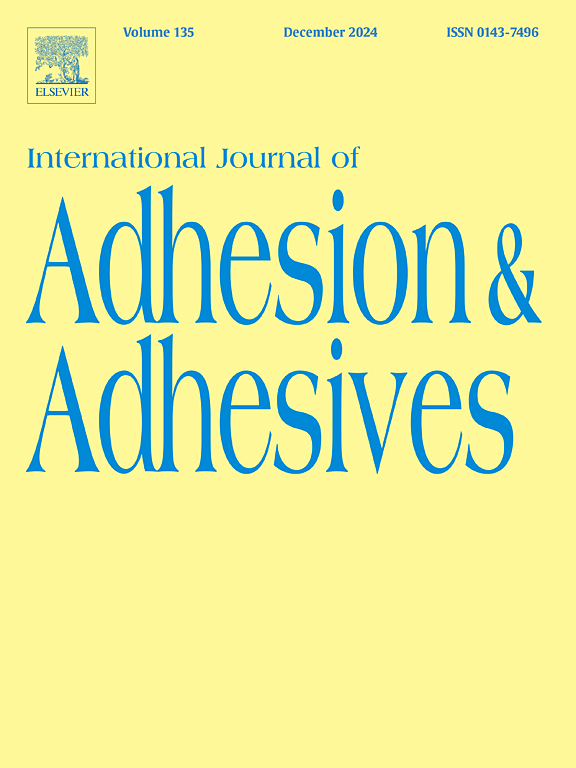Environmental effects on the fractographic analysis of Mode I delamination on secondary and co-bonded composite adhesive joints
IF 3.5
3区 材料科学
Q2 ENGINEERING, CHEMICAL
International Journal of Adhesion and Adhesives
Pub Date : 2025-09-25
DOI:10.1016/j.ijadhadh.2025.104160
引用次数: 0
Abstract
Adhesive bonding technologies for thermoset polymer composites have been used in marine, automotive, construction and aerospace industries due to their superior mechanical behaviour (high strength-to-weight ratio, damage tolerance and fatigue resistance) compared to conventional joining methods. The main disadvantage of this joining technology is its susceptibility to delamination due to disbonding during use. Loading conditions, adhesive type, ageing effects and lack of inspection procedures are just some of the elements that affect the overall structural performance of the composite joint during the manufacturing process. A deeper understanding of how these elements affect joint behaviour is required to improve joint performance and design. This work provides a comparative fractographic analysis for two different joint types: co-bonded (CB) and secondary bonded (SB) joints, under Mode I delamination at elevated temperature and high humidity conditions. Fractographic analysis was used to compare the two joint technologies and explain the differences in toughness values and fracture behaviour, revealing crack propagation mechanisms in composite joints. While the CB and SB joints have comparable fracture toughness (GIC) values, different fracture characteristics and bonding methods can discern these two bonding technologies, indicating that SB joints are more susceptible to environmental conditioning.
环境对二次和共粘结复合粘结接头I型分层断口分析的影响
与传统的连接方法相比,热固性聚合物复合材料的粘接技术由于其优越的机械性能(高强度重量比、损伤容忍度和抗疲劳性)已被用于船舶、汽车、建筑和航空航天工业。这种连接技术的主要缺点是在使用过程中由于脱离而容易分层。在制造过程中,载荷条件、粘合剂类型、老化效应和缺乏检验程序只是影响复合材料接头整体结构性能的一些因素。需要更深入地了解这些因素如何影响关节行为,以改善关节的性能和设计。本文在高温高湿条件下,对共粘结(CB)和次级粘结(SB)两种不同类型的接头进行了I型分层的断口分析比较。采用断口分析对两种接头进行了比较,解释了韧性值和断裂行为的差异,揭示了复合材料接头的裂纹扩展机制。虽然CB和SB接头具有相当的断裂韧性(GIC)值,但不同的断裂特征和连接方式可以区分这两种连接方式,表明SB接头更容易受到环境条件的影响。
本文章由计算机程序翻译,如有差异,请以英文原文为准。
求助全文
约1分钟内获得全文
求助全文
来源期刊

International Journal of Adhesion and Adhesives
工程技术-材料科学:综合
CiteScore
6.90
自引率
8.80%
发文量
200
审稿时长
8.3 months
期刊介绍:
The International Journal of Adhesion and Adhesives draws together the many aspects of the science and technology of adhesive materials, from fundamental research and development work to industrial applications. Subject areas covered include: interfacial interactions, surface chemistry, methods of testing, accumulation of test data on physical and mechanical properties, environmental effects, new adhesive materials, sealants, design of bonded joints, and manufacturing technology.
 求助内容:
求助内容: 应助结果提醒方式:
应助结果提醒方式:


